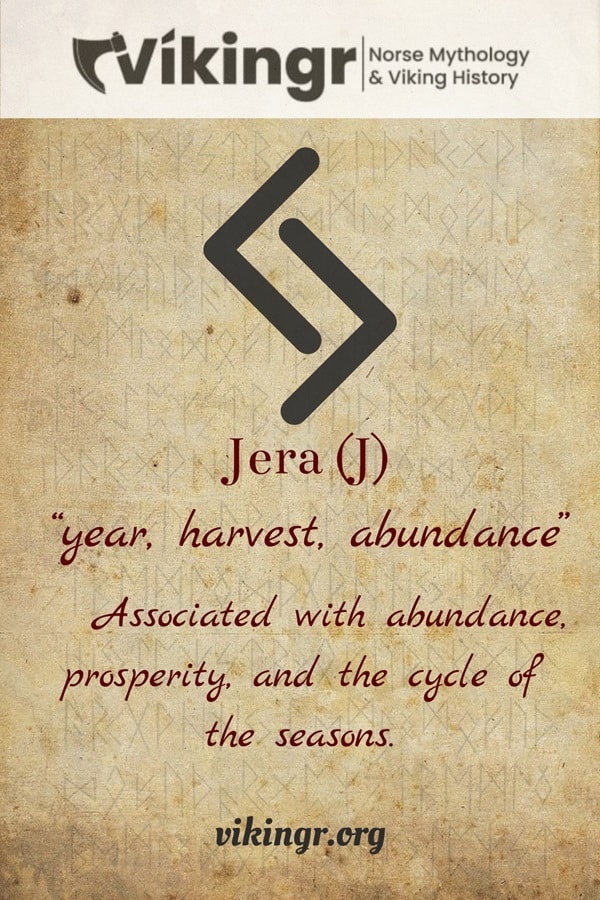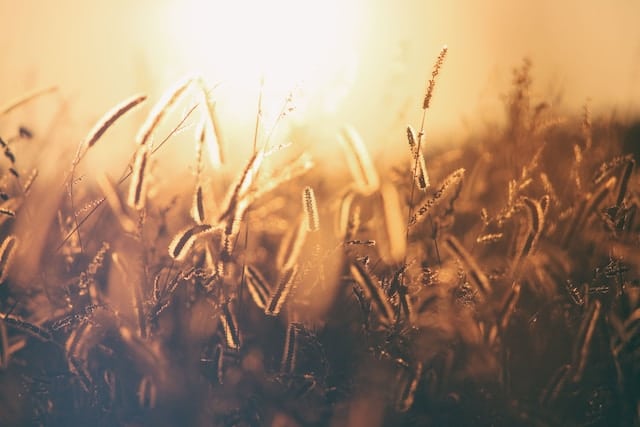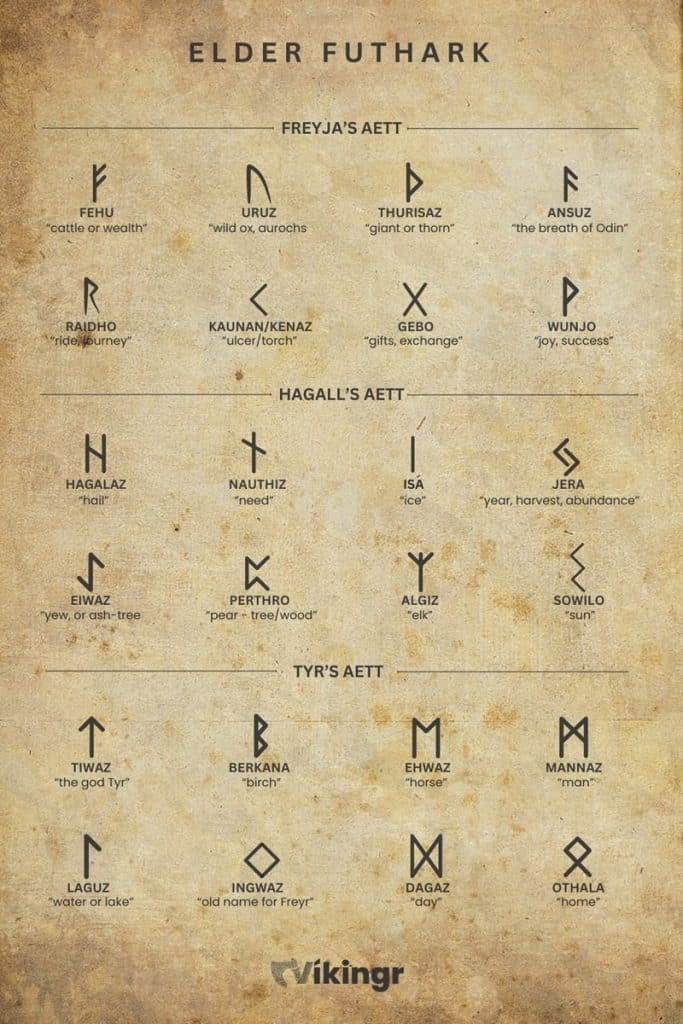In this post we’re journeying once more into the world of the Vikings and their enigmatic runic system, the Elder Futhark. Our focus? The twelfth rune in this ancient alphabet, Jera, a symbol of harvest and reward.
Jera: Background and Description
Our story begins with the Elder Futhark, the oldest form of the runic alphabets, used by the Germanic tribes for the earliest Nordic inscriptions. Jera, the twelfth rune in this sequence, follows Isa and precedes Eiwaz. The name “Jera” hails from Old Norse, translating roughly to “year”, or even “good year” or “harvest.”
The Elder Futhark, the ancient runic system that Jera is a part of, was widely adopted across Europe. From the chilly landscapes of Scandinavia to the green isles of Britain, and even extending to the sun-kissed shores of Italy, these runes left their legacy. Elder Futhark runes, has been found inscribed on both impressive runestones and ordinary everyday objects, demonstrating its broad use and importance.
The etymology of “Jera” is fascinating. Rooted in the Proto-Germanic “*jērą,” it’s associated with the cycle of the year and, more specifically the harvest. This gives us a glimpse into the mindset of the ancient Germanic peoples, showing us that they valued the cycles of nature and the rewards of their labor.

Graphical Representation
Visually, Jera is a simple yet elegant rune. It’s composed of two “Vs”, or the modern “larger/smaller than” symbol, that turn into each other.
Historically, variations of Jera’s design have been found. Some inscriptions show the rune with more curved lines or with the lines angled in different directions. However, the traditional form remains the most recognized and used.
Phonetic Value
In the Proto-Germanic language, Jera represented the sound “j,” as in “year.” As Germanic languages evolved, so did the pronunciation of this rune. In Old Norse, for example, it was pronounced as a “y.”
Symbolic Meaning of the Jera Rune
Now, let’s delve into the symbolic heart of Jera. This rune is traditionally associated with the cycle of the year and the harvest. It represents the culmination of efforts, the reward at the end of a journey, or the realization of a wish.

The rune is also linked to the concept of cyclical time and the rhythms of nature. It’s a reminder of the importance of patience and the understanding that everything has its own time.
The Guardian God Heimdall is a central figure in Norse mythology, embodying vigilance and loyalty as well as the cyclical nature of time. Jera, with its associations with cycles and harvest, reflects these themes, offering a glimpse into the values and beliefs of the ancient Germanic peoples.
The Aett and its Symbolism
Jera belongs to the second aett of the Elder Futhark, a group of eight runes associated with the guardian god Heimdall. This aett, or family of runes, carries themes of transformation, balance, and the cyclical nature of life.
Heimdall, the Guardian of the Gods, is a central figure in this aett. Known for his vigilance and loyalty he embodies the energies of both protection and watchfulness. Jera, with its themes of cycles and harvest, adds a layer of balance to this aett. Moreover it is reflecting the balance between effort and reward, vigilance and harvest.

Elder Futhark Quiz
Do you want to test your knowledge of Elder Futhark runes? Then this quiz is perfect for you!
Don’t forget to play our other games as well!
Jera Used in Divination and Magic
Now, I must preface this section by saying that I don’t personally believe in divination or magic. However, I find the historical and cultural aspects of these practices fascinating, and they’re certainly popular among many rune enthusiasts.
In runic divination, Jera is often interpreted as a sign of fruitful outcomes. Moreover it is seen as a reward for past efforts, or a period of peace and happiness. It’s a symbol of the natural cycle of cause and effect as well as a reminder that our actions today shape our outcomes tomorrow.
Historically, there are references to the use of Jera in spellwork, particularly in spells related to harvest, fertility, and cycles. For example, in the Old Norse poem “Sigrdrífumál,” the valkyrie Sigrdrífa advises the hero Sigurd “Dragon Slayer” to carve “victory runes” on his sword, including Jera, to ensure success in battle.
Frequently Asked Questions
Jera symbolizes the cycle of the year and the harvest as well as the rewards of hard work and patience.
In divination, this rune often signifies a fruitful outcome, a reward for past efforts, or a period of peace and happiness.
Jera belongs to the second aett of the Elder Futhark, associated with the god Heimdall.
Featured Image Credit: BK, Public domain, via Wikimedia Commons
